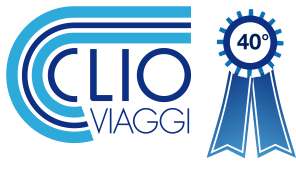Piedmont rewards curiosity. In Italy’s northwest, vineyards fold over the Monferrato hills, cool air settles in deep wine cellars, and the scent of white truffles and roasted hazelnuts marks the seasons. Time moves slowly here; food and craft shape both rhythm and landscape.
Among the most fun things to do in the Piedmont region are often the simplest ones, tasting, walking, pausing; moments that link Turin’s arcaded streets and riverside parks to Monferrato’s vine-covered ridges, Canelli’s underground cathedrals, Alba’s truffle woods, and the high paths of the Alps. Every step feels anchored in balance and ease.
1. Turin: arcades, museums, and riverside calm
Turin, the regional capital, sets the tone.
The city’s heart unfolds beneath eighteen kilometres of arcades linking cafés and shops from Piazza Castello to Via Po, framed by the UNESCO-listed Savoy Royal Residences.
Nearby, the Egyptian Museum ranks among the world’s finest, while the Mole Antonelliana houses the National Museum of Cinema with a panoramic lift into its dome.
Following the arcades down toward the Po River, Parco del Valentino opens a green corridor along the water, complete with a riverside castle and the 19th-century Borgo Medievale.
For a taste of local life, Porta Palazzo, one of Europe’s largest open-air markets, fills a whole square with colour and voices, and nearby cafés serve bicerin, a layered drink of coffee, chocolate, and cream.
Starting here offers a glimpse of what many mean by the fun things to do in the Piedmont region: a blend of culture, grace, and everyday rhythm that naturally leads into the hills beyond.
From the arcades and river of the capital, the road eases east into the first wine hills.
2. Monferrato: villages and vineyards
East of Turin, the Monferrato hills undulate in vine-lined ridges dotted with castles and stone villages such as Casale Monferrato and Cella Monte.
Terrace squares open to wide horizons, lanes wind past dry-stone walls and chapels, and the appeal is measured rather than showy.
Beneath many historic houses lie infernot: small wine chambers hand-carved in soft tufa, usually in the 19th century, prized for their constant cool and darkness.
These intimate cellars belong to the UNESCO-listed Vineyard Landscape of Piedmont: Langhe-Roero and Monferrato.
A short drive south, the slopes deepen and the vineyards give way to another hidden world below ground.
3. Canelli: the underground cathedrals
South of Monferrato, the town of Canelli hides a second landscape beneath its streets.
In the 19th century, local wine houses carved vast vaulted galleries into the tufa hillsides. These so-called underground cathedrals maintain steady temperature and humidity, ideal for aging sparkling wines, from Asti Spumante to metodo classico styles, and today stand among the highlights of the same UNESCO site.
Inside, brick arches and long, echoing corridors trace a story of patience and precision. The air is cool and faintly sweet with yeast and stone, and thousands of resting bottles shimmer in the half-light.
For wine lovers, walking these cellars is one of the most evocative ways to feel the region’s heritage made tangible.
To explore both sides of this landscape, the villages above ground and the vaulted cathedrals below, our itinerary Piedmont: Monferrato & Canelli – The Underground Cathedrals brings them together in one curated journey through vineyards, cellars, and the timeless rhythm of the region.
